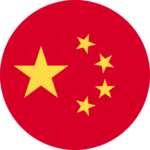
By Rebecca Ray
Do high standards for environmental and social protections deter Chinese overseas development finance?
New data from the Boston University Global Development Policy Center shows that China’s borrowers have the policy space to set and enforce their own environmental and social standards, without fear that high standards may scare off potential finance.
The China’s Overseas Development Finance (CODF) Database tracks 1,099 sovereign commitments worth $498 billion, from China’s two major development finance institutions (DFIs): the China Development Bank and the Export-Import Bank of China. It includes precise geolocations for 736 project-specific commitments, allowing analysis of the environmental and social risks intrinsic to their locations.
Globally, the CODF Database tracks three types of location-based environmental and social risks: project overlaps with potential or likely critical habitats, Indigenous peoples’ lands and national protected areas. These three sensitive territory types do not cover all types of environmental and social risks, but their globally agreed upon definitions allow for a consistent comparison of risks across countries and years. For example, both the 2010 Coca-Codo Sinclair dam in Ecuador and Nigeria’s 2018 National ICT Infrastructure Backbone project intersect with all three types of sensitive territories, allowing for comparison, despite their differences in time and space.
Figure 1 shows the overall overlap of CODF Database projects with each sensitive territory type. Of the 736 projects, nearly half overlapped with critical habitats, and between one-fourth and one-third overlapped with Indigenous peoples’ lands and protected areas.
Figure 1: Chinese Overseas Development Finance: Overlap with Sensitive Territories, 2008-2021

The much higher overlap with potential critical habitat than with the other two types of sensitive territory is particularly striking, as globally, about the same amount of land is classified as potential critical habitats and protected areas. This means the differences in overlap are more likely due to differing levels of host-country legal protection. National protected areas are delineated and managed, while critical habitats are areas crucial for biodiversity but not necessarily protected by law. Indigenous peoples’ lands vary widely in their legal protections across different countries. In other words: China’s development finance is sensitive to host country standards and indeed relies on those standards to direct it to low-risk, high-quality projects.
These findings reinforce previous research on China’s “country systems” approach to managing environmental risks, deferring to borrowers’ standards rather than applying consistent regulations of their own. They underscore the importance of Belt and Road Initiative (BRI) host country governments proactively setting and enforcing environmental standards designed for their own sustainable development goals, rather than expecting Chinese lenders to take on that role.
How might these lessons be incorporated into future lending? Some clues emerge from trends in recent years. Figure 2 tracks project overlaps during three time periods: the five years before the announcement of the BRI (2008-2012), the first five years of the BRI (2013-2017) and the four most recent years (2018-2021). During the early BRI years, the overlaps grew to account for the vast majority of China’s overseas development finance: only 29 percent of project commitments did not overlap with at least one of these territories. But in the last five years, they shrank back below the pre-BRI profile. Approximately two-thirds of project finance, 66 percent, had no overlaps with the sensitive territories.
Figure 2: China’s Overseas Development Finance: Overlap with Critical Habitats (CH), Indigenous Peoples’ Lands (IPL) and Protected Areas (PA), in Percent of Committed Funds

A host of recent Chinese government guidance shows that China has learned the importance of minding environmental and social risks. Between 2021 and 2022, new guidelines were released on green overseas investment, construction and finance from high-ranking government agencies such as the Ministry of Foreign Commerce and the China Banking and Insurance Regulatory Commission. Nonetheless, as with any international finance or investment project, it remains the responsibility of host country governments to oversee and manage social and environmental risks.As countries begin to propose new large-scale projects to propel their economies out of the COVID-19 slump, cooperation between China and host countries will be crucial to safeguard the long-term environmental, social and economic sustainability of these projects.
*Rebecca Ray is a Senior Academic Researcher with the Boston University Global Development Policy Center. Follow her on Twitter: @BUBeckyRay.







